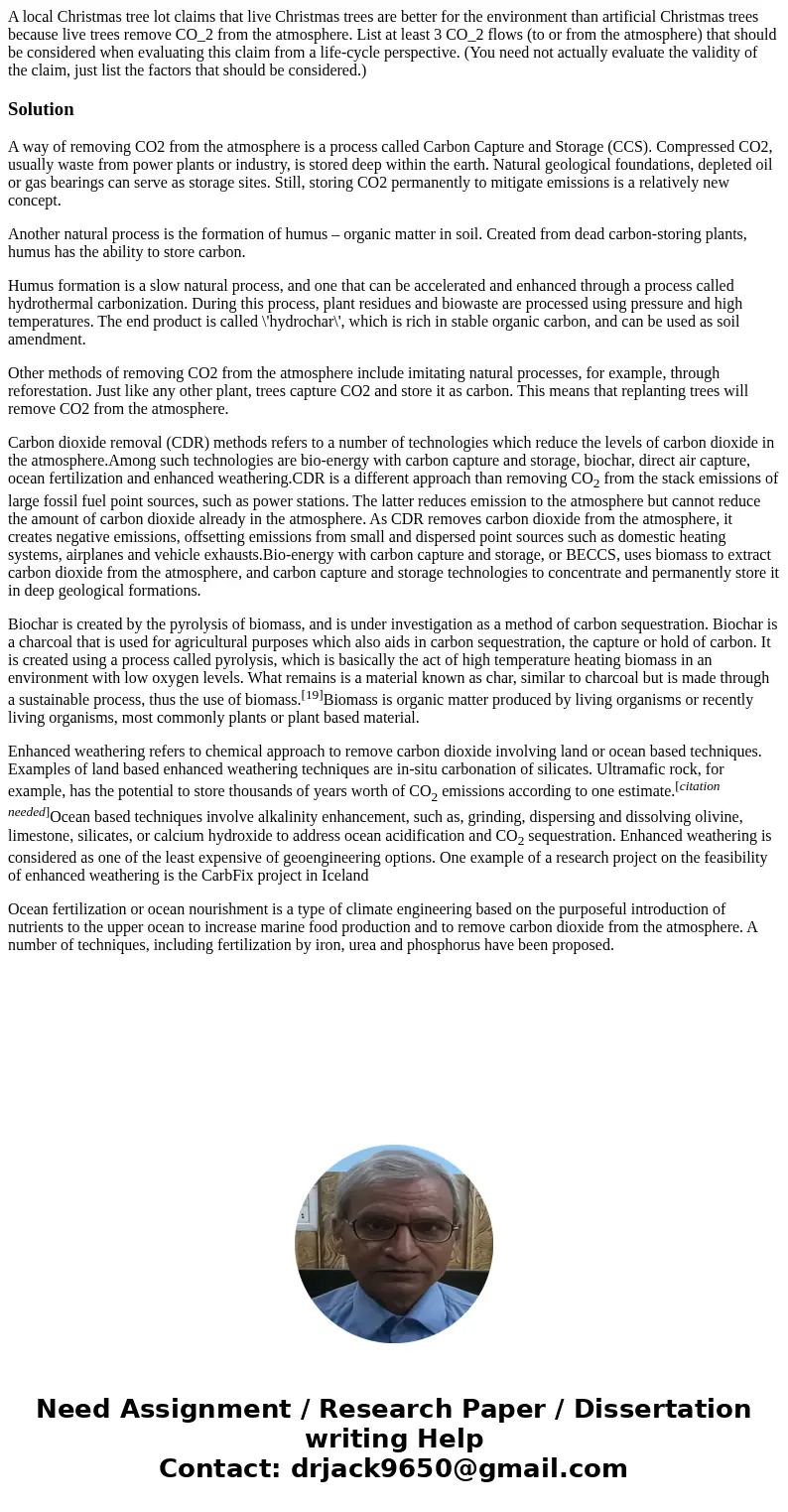A local Christmas tree lot claims that live Christmas trees
Solution
A way of removing CO2 from the atmosphere is a process called Carbon Capture and Storage (CCS). Compressed CO2, usually waste from power plants or industry, is stored deep within the earth. Natural geological foundations, depleted oil or gas bearings can serve as storage sites. Still, storing CO2 permanently to mitigate emissions is a relatively new concept.
Another natural process is the formation of humus – organic matter in soil. Created from dead carbon-storing plants, humus has the ability to store carbon.
Humus formation is a slow natural process, and one that can be accelerated and enhanced through a process called hydrothermal carbonization. During this process, plant residues and biowaste are processed using pressure and high temperatures. The end product is called \'hydrochar\', which is rich in stable organic carbon, and can be used as soil amendment.
Other methods of removing CO2 from the atmosphere include imitating natural processes, for example, through reforestation. Just like any other plant, trees capture CO2 and store it as carbon. This means that replanting trees will remove CO2 from the atmosphere.
Carbon dioxide removal (CDR) methods refers to a number of technologies which reduce the levels of carbon dioxide in the atmosphere.Among such technologies are bio-energy with carbon capture and storage, biochar, direct air capture, ocean fertilization and enhanced weathering.CDR is a different approach than removing CO2 from the stack emissions of large fossil fuel point sources, such as power stations. The latter reduces emission to the atmosphere but cannot reduce the amount of carbon dioxide already in the atmosphere. As CDR removes carbon dioxide from the atmosphere, it creates negative emissions, offsetting emissions from small and dispersed point sources such as domestic heating systems, airplanes and vehicle exhausts.Bio-energy with carbon capture and storage, or BECCS, uses biomass to extract carbon dioxide from the atmosphere, and carbon capture and storage technologies to concentrate and permanently store it in deep geological formations.
Biochar is created by the pyrolysis of biomass, and is under investigation as a method of carbon sequestration. Biochar is a charcoal that is used for agricultural purposes which also aids in carbon sequestration, the capture or hold of carbon. It is created using a process called pyrolysis, which is basically the act of high temperature heating biomass in an environment with low oxygen levels. What remains is a material known as char, similar to charcoal but is made through a sustainable process, thus the use of biomass.[19]Biomass is organic matter produced by living organisms or recently living organisms, most commonly plants or plant based material.
Enhanced weathering refers to chemical approach to remove carbon dioxide involving land or ocean based techniques. Examples of land based enhanced weathering techniques are in-situ carbonation of silicates. Ultramafic rock, for example, has the potential to store thousands of years worth of CO2 emissions according to one estimate.[citation needed]Ocean based techniques involve alkalinity enhancement, such as, grinding, dispersing and dissolving olivine, limestone, silicates, or calcium hydroxide to address ocean acidification and CO2 sequestration. Enhanced weathering is considered as one of the least expensive of geoengineering options. One example of a research project on the feasibility of enhanced weathering is the CarbFix project in Iceland
Ocean fertilization or ocean nourishment is a type of climate engineering based on the purposeful introduction of nutrients to the upper ocean to increase marine food production and to remove carbon dioxide from the atmosphere. A number of techniques, including fertilization by iron, urea and phosphorus have been proposed.

 Homework Sourse
Homework Sourse